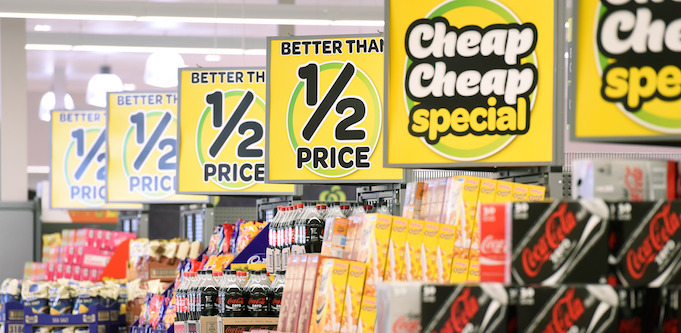
Source: AAP/Dan Peled
Classic bricks-and-mortar retailers have some of the biggest customer loyalty programs – but the experts say that businesses must understand these incentive schemes don’t necessarily work.
Roy Morgan research surveyed more than 7,300 Australians aged 14 and over between January and June this year and found 49% of those surveyed were members of the Woolworths Rewards Program. Eighteen percent of those surveyed had a Priceline Sister Club membership and 13% were on board with women’s fashion retailer Millers.
Seventy-eight percent of shoppers at Woolworths have signed up to the loyalty scheme, while 73% of Millers shoppers have a loyalty card, and more than half of the shoppers that walk through Myer’s doors have a Myer One card on hand.
But senior lecturer at Victoria University’s College of Business, Maxwell Winchester, says the weight of evidence says loyalty cards don’t actually make shoppers more likely to stick with your brand.
“What they do is give you detailed information on customers,” he told SmartCompany.
“If you use that database to send your customers reminders, it could be a good marketing activity.”
This means business operators need to understand what the aim of the loyalty program is and be realistic about the reality that your customers will shop elsewhere too.
“If I was to cite any industry that does it well, I’d say airlines do it the best,” says Winchester.
“You have to ask what benefits you can actually give someone that spends that much money.”
Behavioural economics consultant Bri Williams believes businesses should be trying to build habits with their programs, rather than loyalty.
“Think of Aldi – they don’t have a loyalty program and they’ve still been able to develop that customer base,” she says.
The problem with spending a significant amount on the rollout of a loyalty program is that customers will give you their attention for a better deal, but only when they’re in your store.
“I would call the supermarkets a ‘transactional loyalty’ program,” Williams says.
“Because they’re there, people think they may as well get the rewards. But businesses need to go further than that.”
Several of the retailers on the Roy Morgan list use an accumulation model by which the amount spent in store converts into points or directly into dollars off. The Millers program gives one point for every dollar spent, with $5 off a purchase at the 120 point mark – after a customer has spent $120.
The Priceline model gives quarterly ‘payback’ vouchers based on points gained through in-store purchases, of between three and four percent of the overall customer spend.
Williams says in reality, it’s more likely that the simple “ease of use” factors around a business will determine the number of customers through the door.
“When people are dealing with a retailer, they want to feel good about that experience, whether it’s a formal rewards process or whether when I go to a café they remember my name,” she says.
“Whether it’s available parking or something else – ultimately it’s about the way you make your customers feel.”
While sales numbers might not be affected by club cards, changes to loyalty programs can cause shopper outrage. When Woolworths recently changed the calculation for its “Woolworths Dollars” program, it received significant backlash from members, which led to a revision of the whole loyalty scheme.
At the time retail expert and professor at Queensland University of Technology Gary Mortimer told SmartCompany it was still the case that most Australians had four or more loyalty cards in their wallets and didn’t want to have to wait to accrue points.
“Consumers prefer immediate rewards,” he said.
Williams agrees. “If you’re launching a program, make the sign up super easy. On the rewards side, you need to make sure people get immediate benefits,” she says.
“I think it’s about doing a return on investment consideration,” says Winchester.
“If you think that you’re going to spend money on loyalty program and customers are going to be more loyal – well, it doesn’t actually change behaviour.”


COMMENTS
SmartCompany is committed to hosting lively discussions. Help us keep the conversation useful, interesting and welcoming. We aim to publish comments quickly in the interest of promoting robust conversation, but we’re a small team and we deploy filters to protect against legal risk. Occasionally your comment may be held up while it is being reviewed, but we’re working as fast as we can to keep the conversation rolling.
The SmartCompany comment section is members-only content. Please subscribe to leave a comment.
The SmartCompany comment section is members-only content. Please login to leave a comment.